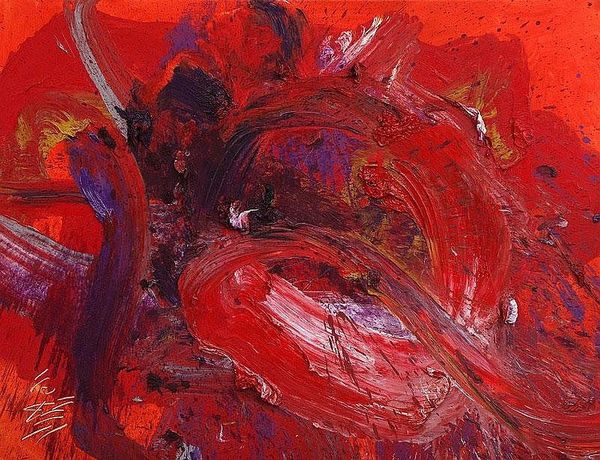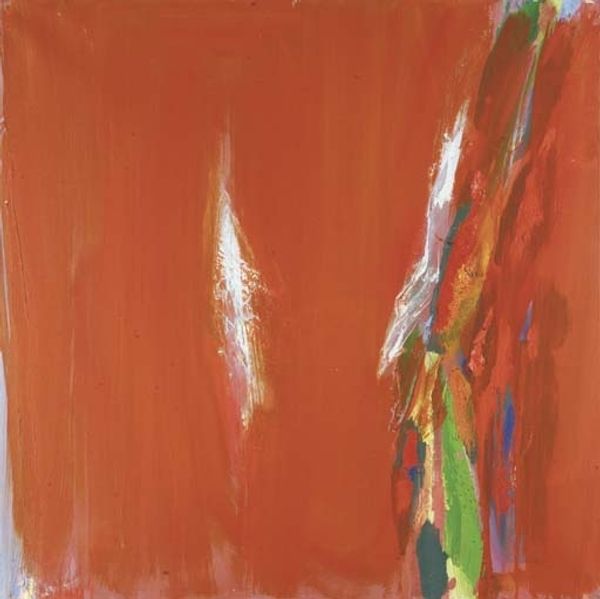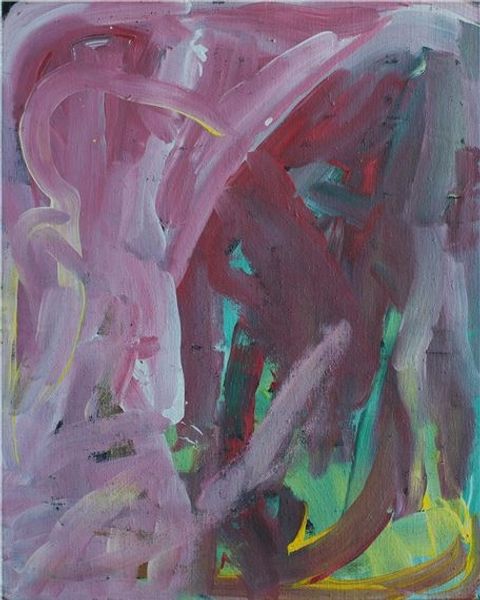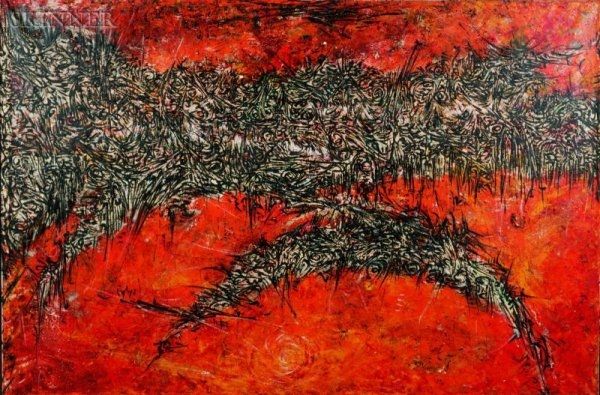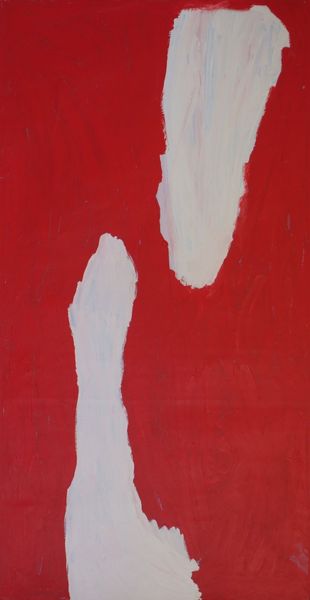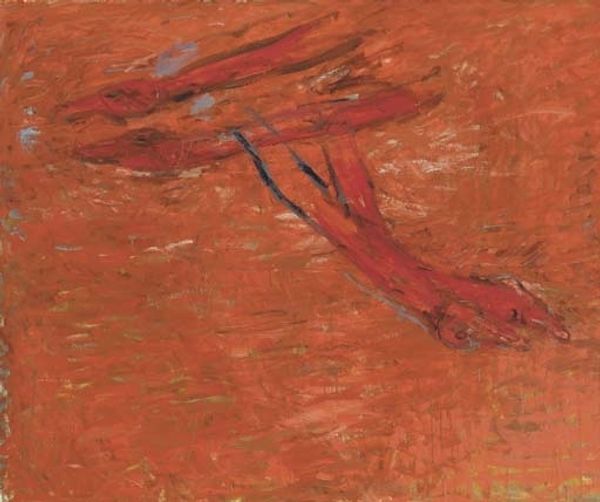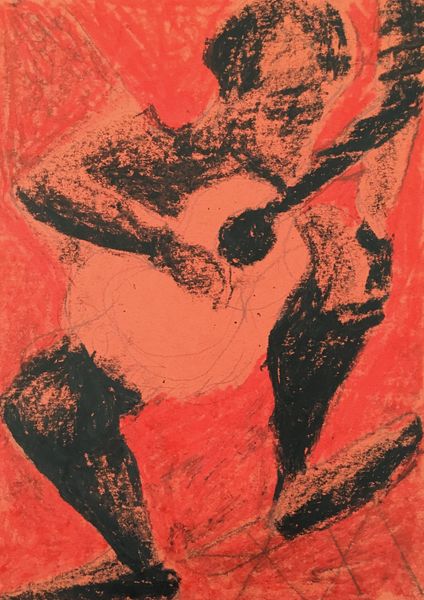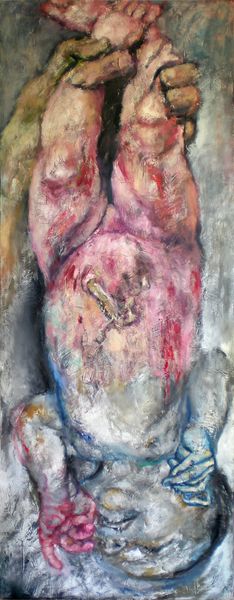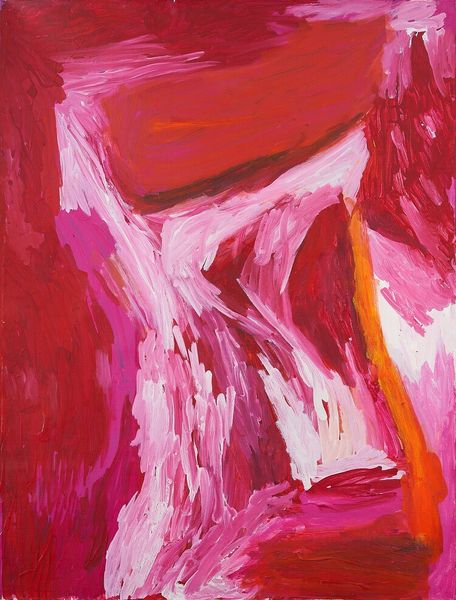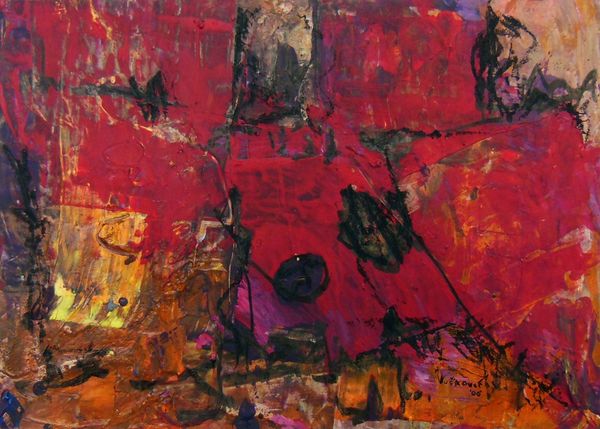
Copyright: Susan Rothenberg,Fair Use
Curator: Here we have Susan Rothenberg's "Maggie's Ponytail," an acrylic on canvas work from 1993. It's quite striking. What are your immediate impressions? Editor: Overwhelmingly red! It feels raw, almost violent, but also… vulnerable. Is that a figure struggling against this suffocating field of color? The brushstrokes seem almost frantic. Curator: Red is definitely a key element. Consider it in symbolic terms; red signifies passion, blood, fire—vitality but also danger. Rothenberg often uses limited palettes to distill emotional essence, and the single ponytail adds a biographical component, since Maggie is Rothenberg's daughter. A braid for children signifies neatness, simplicity. What might a single ponytail abstracted mean, here? Editor: I see that connection more clearly now. Maybe it's a disrupted coming-of-age. We read representations of female adolescence, and braids can be about discipline but also lost innocence, sexual awakenings. It's compelling, how Rothenberg places her daughter, the ponytail, in relationship to her, and a world of danger, power, violence and vitality all in that singular red. Is it an effort to contain her wild child through abstraction, or give her freedom in it? Curator: An interesting proposition. Rothenberg walked a fascinating line between abstract expressionism and figuration, so you get these recognizable, yet dissolving, forms. She’s evoking something deeply personal and intimate, and childhood becomes this crucible of representation in relationship to mother and daughter. Consider also her use of impasto – the thick layering of paint lends the image a tactile, almost sculptural quality, heightening the emotional intensity. The work creates the very physical reality it wants to display. Editor: It almost hurts to look at, but in a way that draws you in. Given the time period it was created, what larger conversations about motherhood do you imagine this art contributed to, whether intentionally or otherwise? Curator: Good point. Remember this emerged amidst intense debates within feminist art circles about representation, essentialism, and the gaze. Rothenberg offers an intensely subjective, even ambiguous take on maternal experience. It isn't romanticized; it’s fraught, visceral, even disturbing, if we recall historical uses of single red to recall bloodshed or trauma. Editor: It’s certainly a challenging piece. I appreciate how Rothenberg pushes against easy categorization, leaving room for individual interpretation of complex feminine iconography. Curator: Precisely, and that enduring ambiguity makes it continually relevant to contemporary dialogues around identity and experience. It invites viewers to consider the raw and sometimes conflicting emotional truths that can exist within family, between parent and child.
Comments
No comments
Be the first to comment and join the conversation on the ultimate creative platform.
